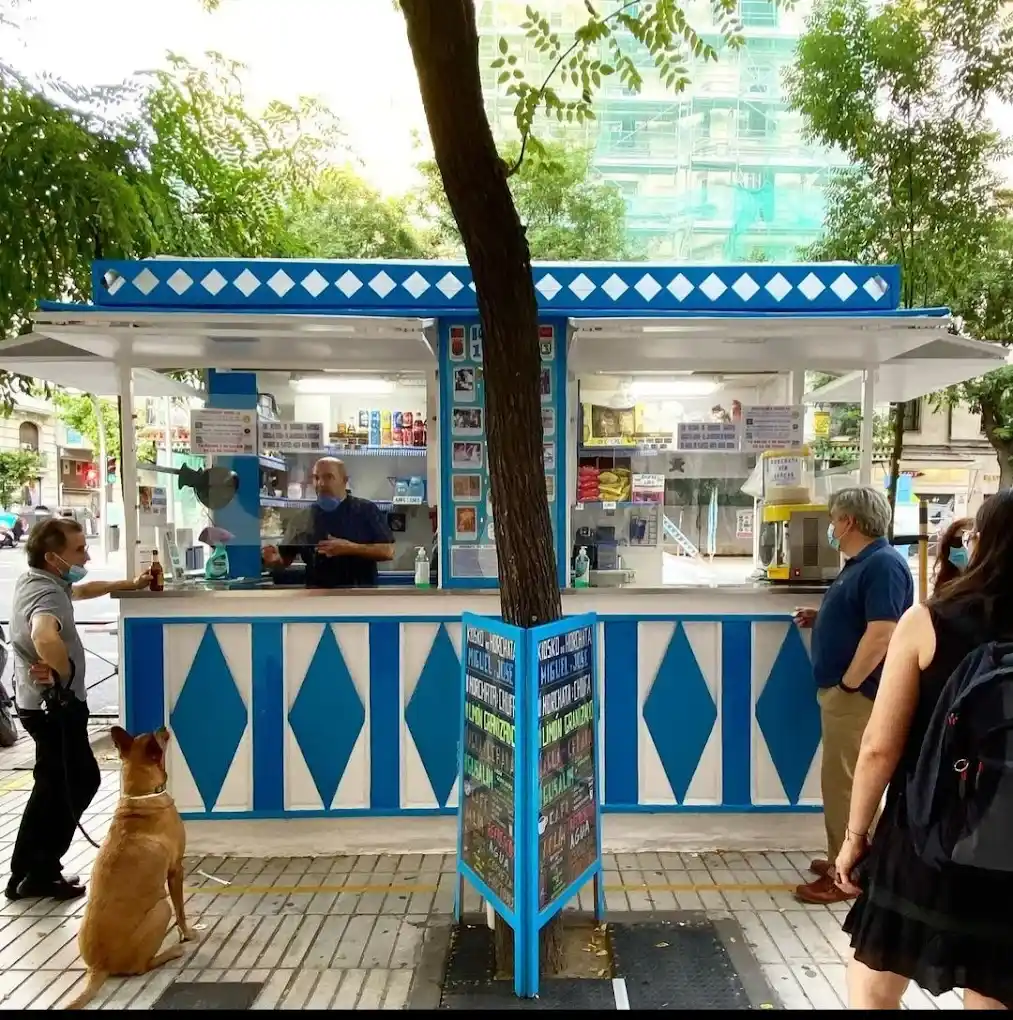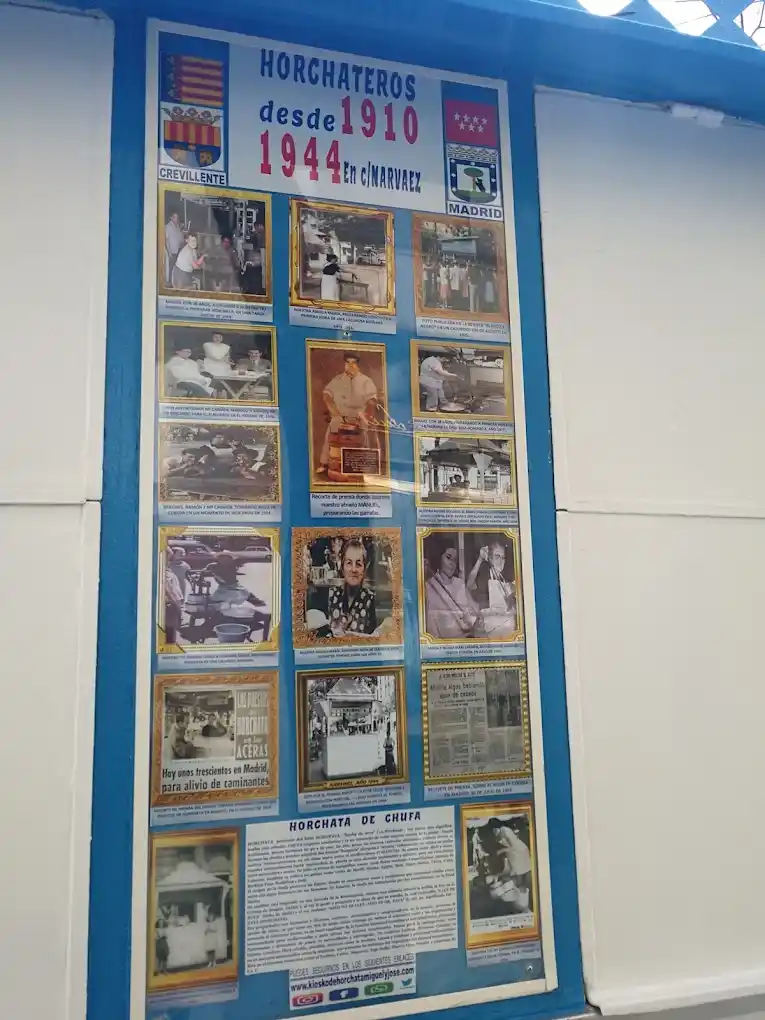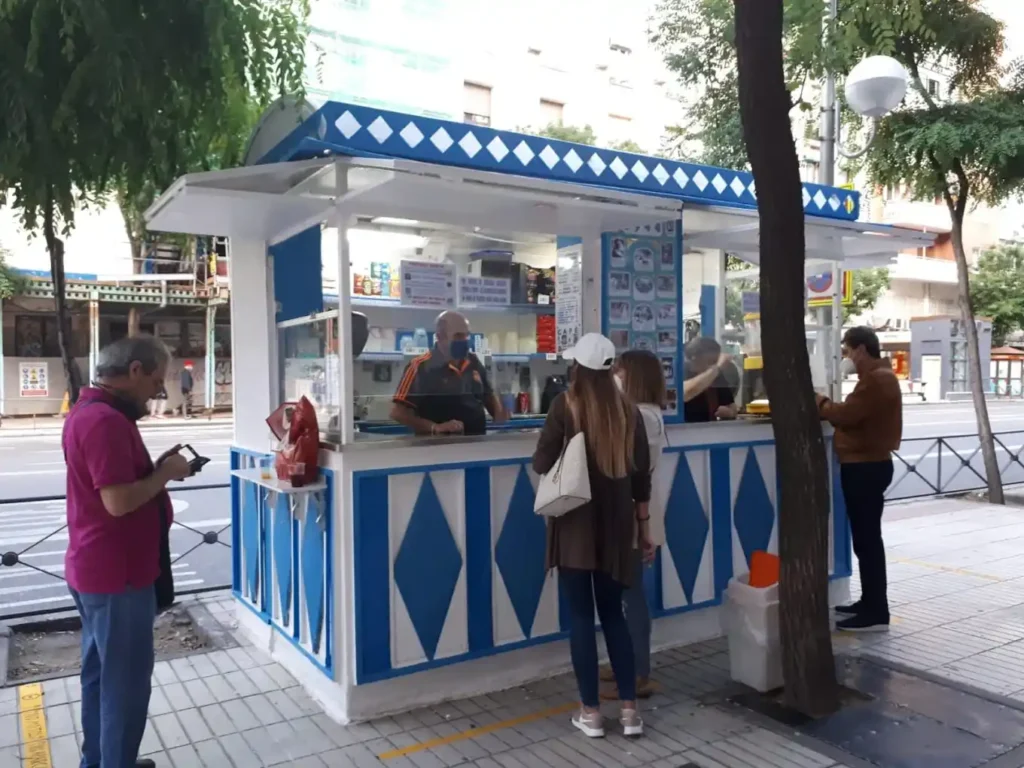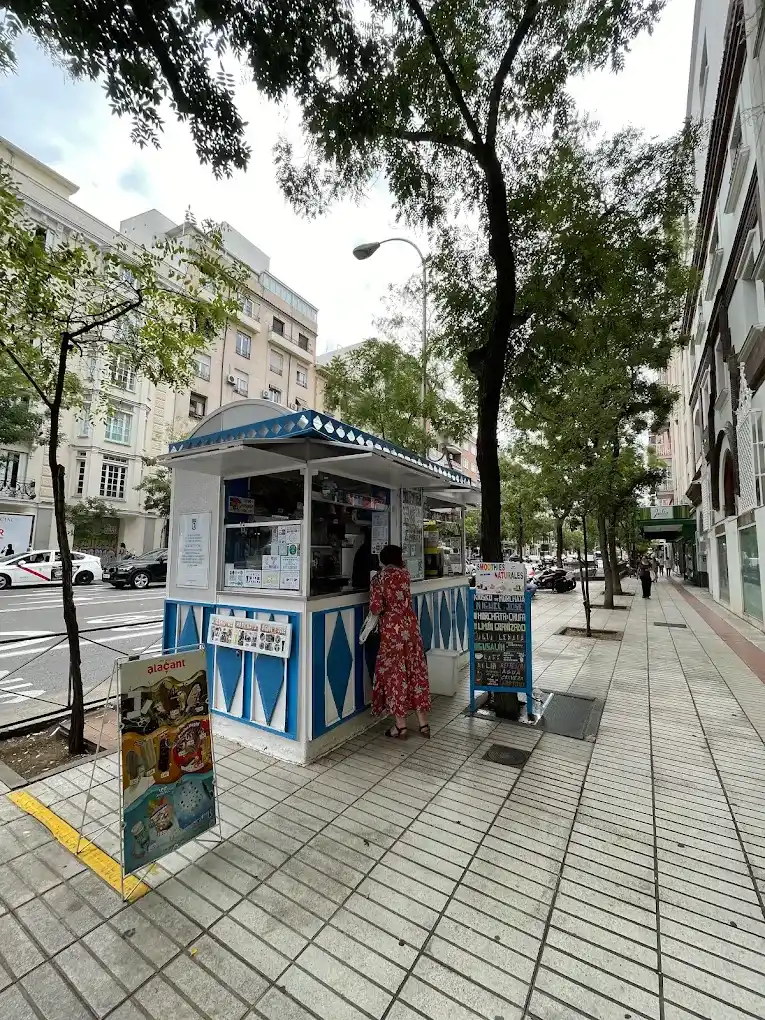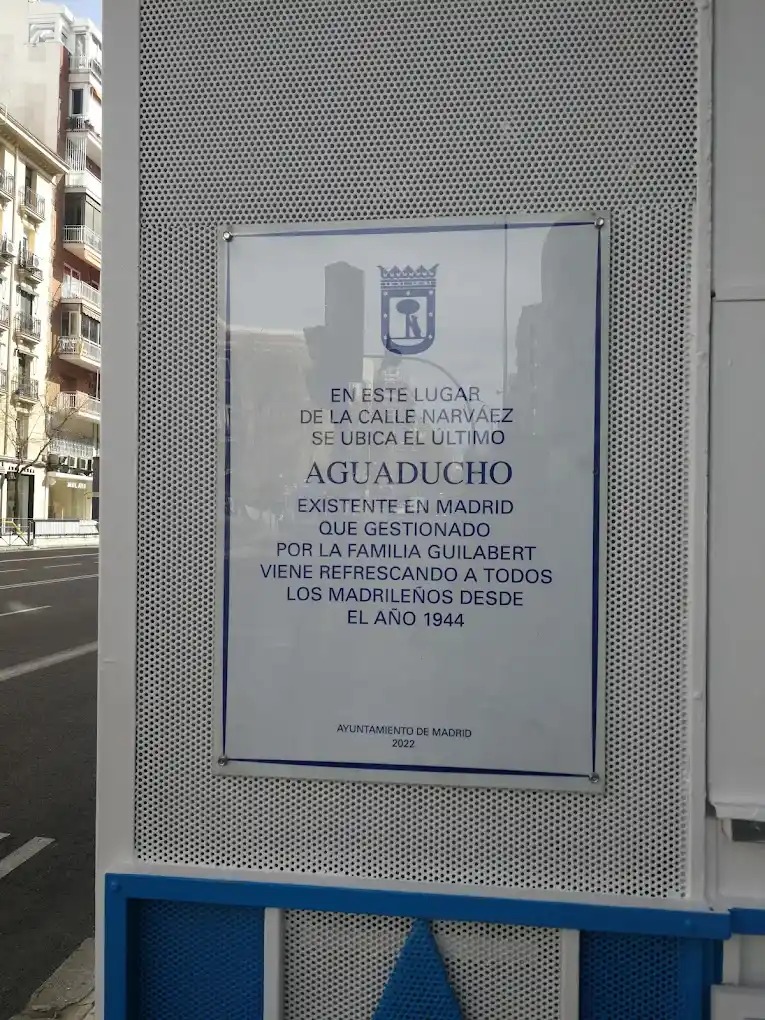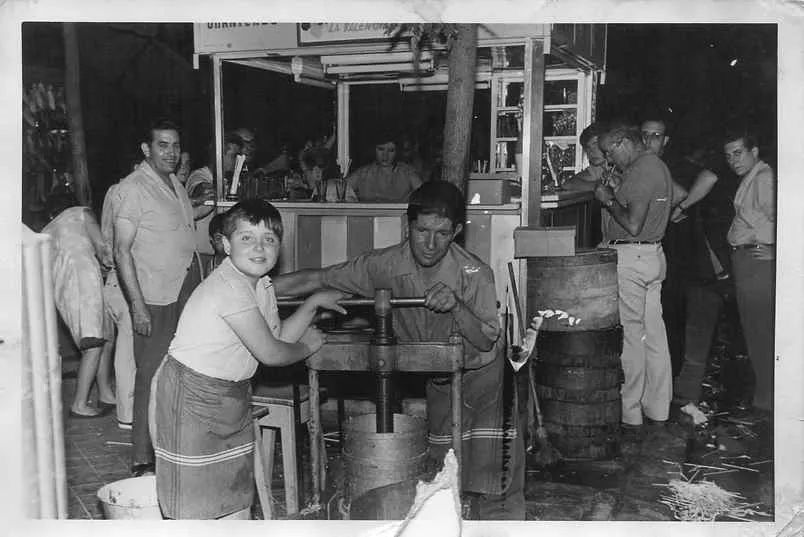The last aguaducho in Madrid (a traditional wooden refreshment stand selling drinks made from water and natural essences).
The story begins in the early 20th century. In 1910, Francisco Guilabert and Francisca Segura arrived in the capital from Crevillente, a sun-drenched town in Alicante surrounded by palm trees. They didn’t come alone. Their children, Francisco and María, came with them. They were in search of opportunity—and they found it in a humble yet deeply Valencian trade: horchata makers.
The first thing they set up was a kiosk on Calle Cedaceros, at the corner with Arlabán. Back then, they were called aguaduchos. Small square wooden stands, painted white and decorated with sparkling glassware. They sold cold drinks made with water and natural essences: horchata de chufa, barley, lemon, orange blossom… And they did so only during the warmer months. In winter, many Alicantinos switched to selling blinds, baskets, or rugs instead.
Over time, the business passed to María—the daughter—and her husband Manuel. They moved to Plaza de las Cortes, right in front of the Spanish Congress. They served drinks there until 1936, when the Spanish Civil War broke out. They had no choice but to return to Crevillente for safety.
But Madrid kept calling. In 1939, they came back. They reopened their kiosk, this time in Plaza del Carmen. A few years later, in 1944, they were granted permission to relocate to what would become their final spot: Calle Narváez. First at number 7. Then, two years later, at number 8—exactly where it still stands today, eighty years on.
The kiosk has always been a family-run business. Grandparents, children, sons-in-law, grandchildren—they’ve all worked there. Today, it’s run by Miguel and José Manuel, the great-grandson of the founders. The fourth generation of horchateros. And in the summer, a new face sometimes joins: Nuria, José Manuel’s daughter. The fifth generation.
For decades, horchata was made right there on the street, using a heavy iron press. Ground tiger nuts, fresh water, sugar. All by hand. Until health regulations changed. Now it’s prepared in a small workshop, but with the same original recipe.
When you approach the kiosk, you might order a horchata. Or a barley water. But what you get is more than just a drink. It’s a glass full of history. An echo from another era.
There was a time when Madrid had more than 300 aguaduchos. Today, only this one remains. And yet, it endures. Day after day. Summer after summer.
So if you ever pass by Calle Narváez, take a moment. Order something cold. Listen closely. Because there’s still a story being told in hushed tones, between sips.

